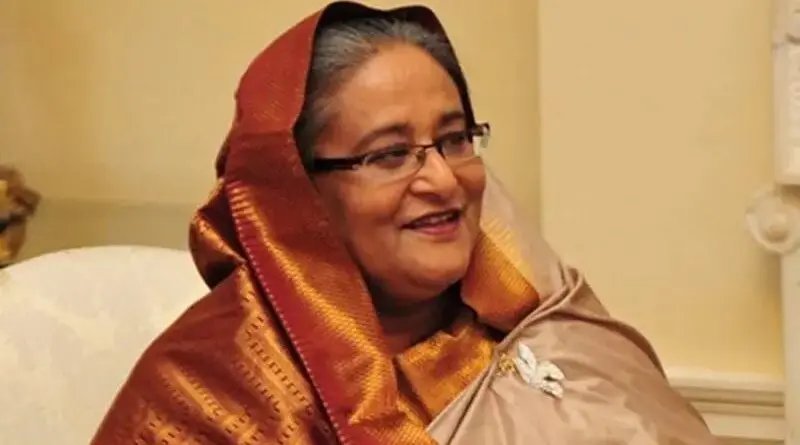Bangladesh: A Conflict Shatter Zone – OpEd
By IPCS
By Mirza Zulfiqur Rahman*
The Fragile States Index (FSI), published annually by the Washington DC based The Fund for Peace has come out with its report for 2016, which covers the conflict events for the year 2015. This article analyzes the indicators provided by the report for Bangladesh, which has seen incidents of spectacular violence in its recent years of political turmoil.
Bangladesh qualifies to be a classic conflict shatter zone (Robert Kaplan), owing to the peculiar conditions attributable to its geographical position, which has resulted in social, economic, political and environmental conflict. The FSI report marks Bangladesh in the Alert category in state fragility for 2016, and in the category of Some Improvement in the decade trends (2007-2016). Its neighbour Myanmar has a similar Alert categorisation in 2016 and Marginal Improvement between 2007-2016, while India has a Elevated Warning ranking in 2016 and Worsening between 2007-2016, according to the FSI Overview Report for the year 2016.
The Sheikh Hasina-led Awami League government assumed office in 2009, which was preceded by a period of intense domestic turmoil (2006-2008) under the military caretaker government in Bangladesh. This period saw extreme political polarisation and violence in the country, and the fractured political conditions sowed the seeds for continued violence during and after the Shahbagh protests of 2013. Therefore, the decadal index of Some Improvement in Bangladesh is quite misleading in the FSI report, and does not co-relate to the Alert sounded for 2016. The past ten years have been marked by increased violence in Bangladesh.
The social indicator index of the FSI report does not accurately depict the intensity of the demographic pressures that Bangladesh is facing (8.0), which when combined with the environmental pressures and population growth, is definitely higher than what has been depicted for India (8.1). Also the intensity of refugees and IDPs depicted for Bangladesh (6.3) needs to be seen in context with the intensity for Myanmar (8.3), as the problems facing both the neighbouring countries are quite similar. The group grievance depicted for Bangladesh (8.9) is also seemingly low given the intense political polarisation, whereas for Myanmar it is high (9.9).
Contextualising the above social indicators, the Bangladesh shatter zone is closely interconnected to the Rakhine region of Myanmar, and the state of Mizoram in Northeast India. Over 60,000 Rohingya migrants are believed to be living in Cox’s Bazaar, in and around the registered camps of Bangladesh and many are accused of illegal activities such as drug-running and other petty crimes. This has led to strong political debate in Bangladesh in the past. The continuing ethnic clashes between Rohingya Muslims and Rakhine Buddhists in the Rakhine state of Myanmar, has led to more Rohingya migrants entering Bangladesh through the porous borders.
The Jamaat-e-Islami, a close ally of the main opposition party, the Bangladesh Nationalist Party, led by Begum Khaleda Zia, seems to offer tacit support to the Rohingya migrants in Bangladesh. This is owing to commonality in religion, and easy indoctrination to their ideology, as most of these migrants are illiterate and do not have adequate livelihood means. There have been allegations that in attacks and road picketing during political protest rallies by the Jamaat and its youth wing, the Islami Chatra Shibir, the Rohingya migrants are used as the frontline human shield in confrontations with the police, in return for political patronage and money.
Looking at the rise in extremely violent incidents in Bangladesh, in particular the use of swords, sharp blades and machetes, especially during political protests and street confrontations, and the killings of liberal bloggers, LGBTQ+ rights activists, Hindu and Buddhist minorities in various parts of Bangladesh, it seems that group grievance in Bangladesh would be alarmingly high. This in turn is directly translating into political violence and there is a growing trend of normalisation of brutalised violent means in the Bangladeshi political scenario. These conditions have led to human flight and brain drain from the country, and is having severe impacts on the young generation, specifically students.
The state legitimacy index under the political and military indicators of the FSI report is again misleading (8.0), as there is a far more serious decline of political legitimacy and democratic choice in Bangladesh, starting from the 2006-2008 period, and continuing to the parliamentary elections of 2014, which was boycotted by the main opposition parties. The political scenario is of extreme vendetta between the main political parties and the religious organisations, directly co-relating to the factionalised elites index (9.6), which has deepened the political divide. The human rights and rule of law index (7.6) does not fit in with the prevailing ground reality either.
Overall, the FSI report seems to have under-assessed certain indicators and the contradictions are evident within indicators of the same grouping. It will be interesting to note the shifts in the FSI report of 2017, which will have to take into account the protracted and violent events of the current year; 2016. The culmination of the actualities of the brutalisation over the past years has finally shown its ugly head in Bangladesh, with the homegrown terrorism and jihadi ideology. It is in the interests of India to see that the conditions present in Bangladesh and Myanmar do not affect the larger region.
* Mirza Zulfiqur Rahman
Research Scholar, IIT Guwahati, Assam

